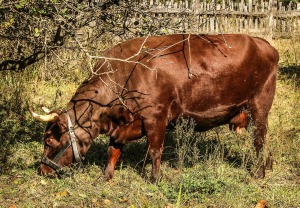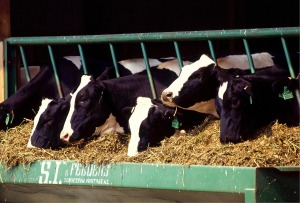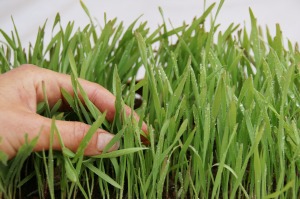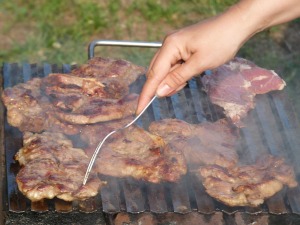Eating well today does not only mean watching what you eat but It also means knowing what was fed to your food.
Dr. David Katz, M.D., an internationally renowned authority on nutrition, wrote in his article “What Did Your Food Eat And Why Is It Important To Know?”, that if we are eating red meat, “there are factors beyond our control that have enormous implications for our health.”
According to Dr. David Katz, our diets should mostly contain plants, but when we do eat red meat, we should consider eating pure meat, the kind of meat that was raised on an organic farm.
The food that we provide our livestock has an enormous effect on our health. There are growing concerns with the food that is given to animals on feedlots. The best food for ruminant animals is grass that grows naturally.
When our animals eat right, so do we.
Depending on where you live, sourcing affordable and reliable organic meat can be difficult. Of course there are many resources which can help you to find such meat. For example, visit some of the sites given below:
- U.S. Wellness Meats — Our Animals Eat Right So You Can Too
- Grass Fed Beef Monthly Buying Club
- Beef | Whole Foods Market
- Local Harvest / Farmers Markets / Family Farms / CSA / Organic Food / Pick your Own
Or, why not consider some small-scale farming, yourself? Don’t be intimidated by the large farms you see; you could start very small and plan to only provide for the needs of your family.
What better way to ensure that livestock are fed only the best feed and are properly raised than by doing it yourself!
 If you’re not permitted to have traditional livestock where you live, how about fish farming? Anyone can have a tank and swap out the ornamental fish for edible ones. Now you’re a farmer!
If you’re not permitted to have traditional livestock where you live, how about fish farming? Anyone can have a tank and swap out the ornamental fish for edible ones. Now you’re a farmer!
Add some lettuces and fresh herbs, which feed off the fish waste, and you’re on your way to becoming a polyculture farmer! That doesn’t sound too difficult, does it?
Efficient farming methods
An agricultural system with several other subsystems where you can grown several types of crops at the same time is a more efficient way of farming. This method of farming is referred to as polyculture, where in a monoculture you would grow only one type of crop.
When you integrate soilless growing techniques with your fish pond and your pasture animals with your crop fields, you are able to use byproducts from one system as an input for the next, and such a method of farming utilizes most of the resources like water, energy and fertilizers more efficiently.
Aquaculture is an efficient way to grow food not only for human consumption, but this system can easily produce food for your livestock, as well. You can feed your animals your pasture grass or the microgreens that you grow in an aquaponic system.
This would not only address food shortage issues, but also produce enough healthy feed for your livestock during harsh weather seasons.
Feedlot feed
 Feedlots have been known to feed animals a corn, soy, and grain-based diet that is high in energy and low in fiber. A high energy low fiber diet is not natural for ruminant animals. Their digestive systems are designed to eat naturally growing pasture grasses.
Feedlots have been known to feed animals a corn, soy, and grain-based diet that is high in energy and low in fiber. A high energy low fiber diet is not natural for ruminant animals. Their digestive systems are designed to eat naturally growing pasture grasses.
Some feedlots are also known to feed animals garbage derived from human waste and farm waste such as candy wrappers, bakery waste, waste paper, and chicken waste. “By-product feedstuffs” and such are not natural animal diets. (Eat Wild).
Here is a quote from Michael Pollan on feedlot cattle feed: “Here animals exquisitely adapted by natural selection to live on grass must be adapted by us – at considerable cost to their health, to the health of the land, and ultimately to the health of their eaters – to live on corn, for no other reason than it offers the cheapest calories around and because the great pile must be consumed.”
Health impacts of unnatural GM food and antibiotics
With modern genetic engineering techniques, genetically altered DNA from plants and animals can be transferred to non related plants and animals to make them more productive, resilient and make them grow faster and bigger.
The benefits of GM foods include lower prices and higher production. However, there have been several concerns among biologists and environmentalists regarding the safety and impacts on human health related to the consumption of GM food. Some of the GM food related concerns are given below.
- Food Allergies
- Increased Toxicity
- Antibiotic Resistance
When farm-raised animals are fed GM food and given antibiotics regularly, they become very different from naturally grown animals. Their bodies are stressed from eating an unnatural diet and gain weight more easily the more antibiotics they have.
Without high fiber and nutrient rich grasses, what nutritional value could the meat eventually have?
Efficient diet for livestock
 The most healthy diet for us should come directly or indirectly from plants, and so, feeding our livestock an all natural pasture grass based diet is one of the most important aspects of livestock nutrition.
The most healthy diet for us should come directly or indirectly from plants, and so, feeding our livestock an all natural pasture grass based diet is one of the most important aspects of livestock nutrition.
It becomes very challenging for many small farms during the winter and drought seasons to find natural pasture grasses. You can easily grow your own grasses by using an aquaponic system that gives you fast results with minimum resources. Micro-green DIY systems use very little water and take very little time to grow grasses that are luscious and high in nutritional value. Your animals are going to love it.
Conclusion
With the rapid rise in industrial food production, animals on feedlots are fed grain-based feed to increase their growth. They are also given growth hormones and antibiotics on a regular basis. Eating meat that comes from animals living on unnatural diets can have many health impacts on humans.
The beef you purchase from a supermarket more than likely came from a commercial feedlot that was routinely given antibiotics, GM food and by-product feedstuffs.
 Why not try an aquaponic or DIY micro-green fodder system to raise your own livestock and fish!
Why not try an aquaponic or DIY micro-green fodder system to raise your own livestock and fish!
If you haven’t tried the DIY system for growing micro-green fodder, you should try now! If you have, please leave a comment and let us know how it worked for you. Click here to book a meeting with us for advice on how to get started with your farm.
We would really appreciate your feedback, so please visit our facebook page and leave a comment or simply like our posts.
Source: Sustainable Livestock Nutrition
Sources and related articles:
- Top 5 Reasons to Eat Grass-Fed Meat | Sustainable Livestock Nutrition
- Sustainable Nutrition For Dairy Cattle & Grass Fed Beef | Sustainable Livestock Nutrition
- Health Benefits of Consuming Pasture-Raised Animals | Sustainable Livestock Nutrition
- Integrated Fish Farming & Benefits of Polyculture | Nourish The Planet
- Eat Wild
- Genetically modified plants and human health



